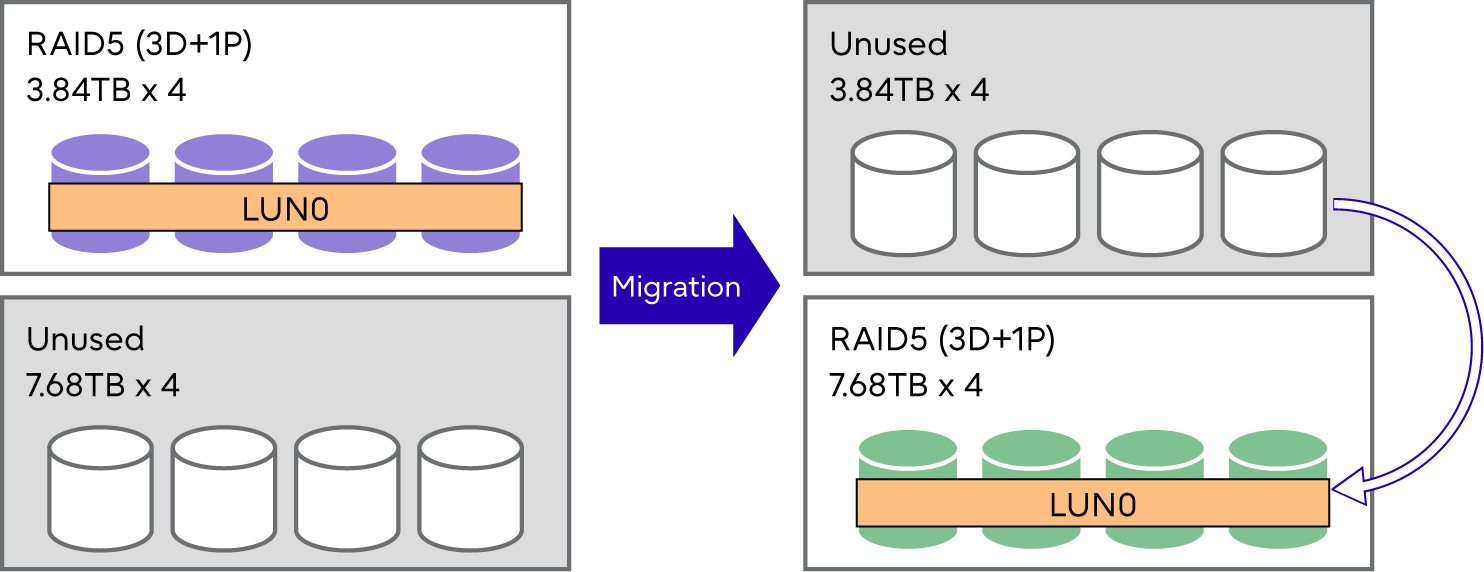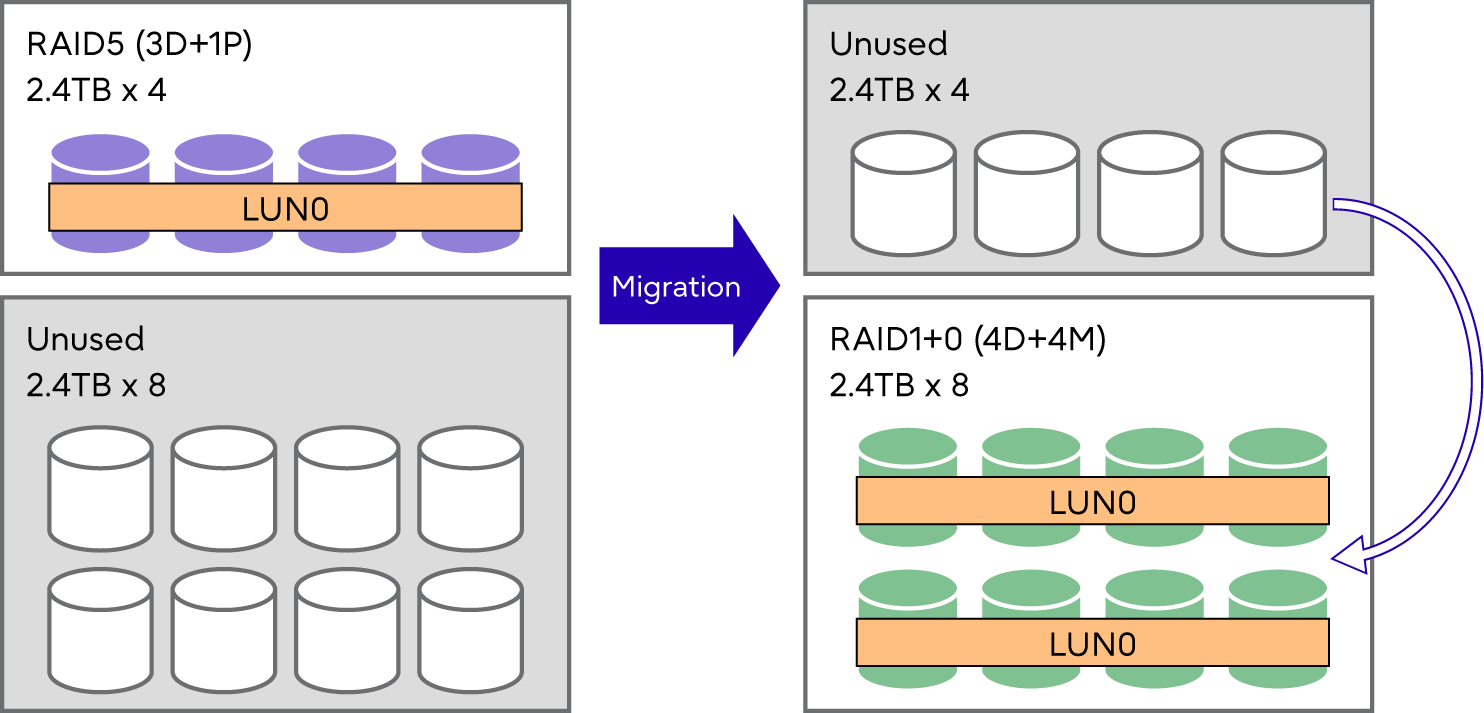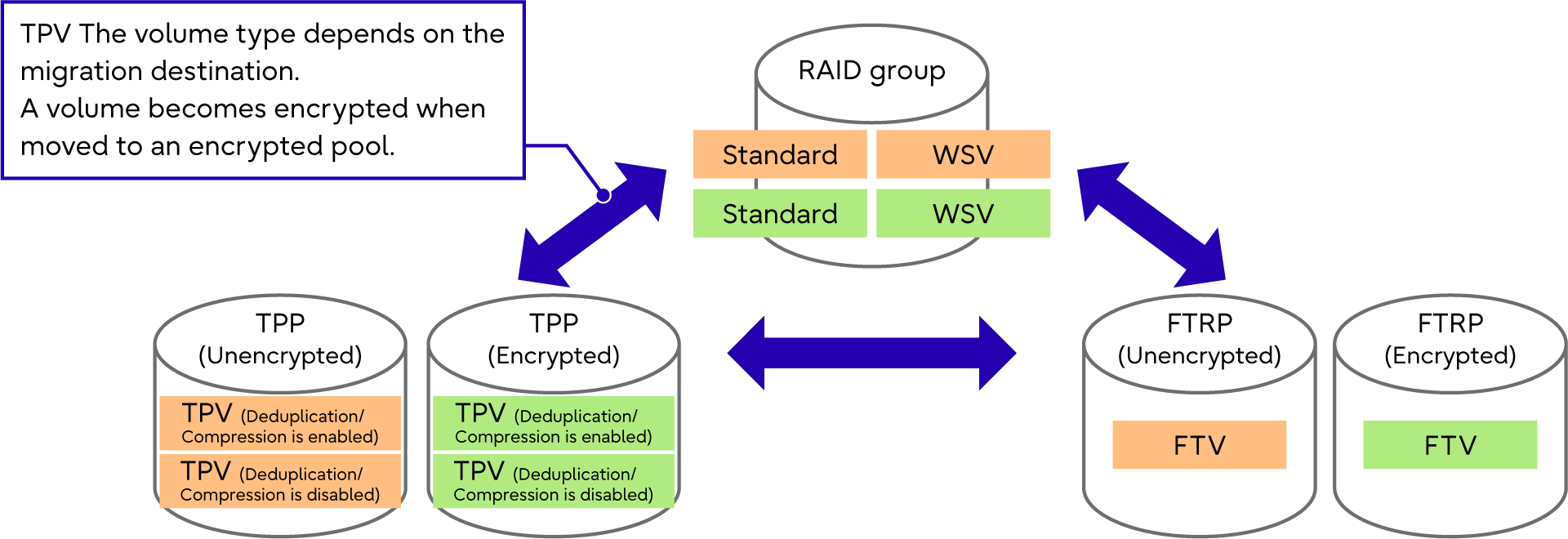RAID Migration
RAID Migration is a function that moves a volume to a different RAID group with the data integrity being guaranteed. This allows easy redistribution of volumes among RAID groups in response to customer needs. RAID Migration can be carried out while the system is running, and may also be used to switch data to a different RAID level changing from RAID5 to RAID1+0, for example.
To migrate volumes to FTRPs with ETERNUS CLI, use the Flexible Tier Migration function.
- Data moved from a 3.84TB drive configuration to a 7.68TB drive configurationFigure: RAID Migration (When Data Is Migrated to a High Capacity Drive)

- Volumes moved to a different RAID level (RAID5 g RAID1+0)Figure: RAID Migration (When a Volume Is Moved to a Different RAID Level)

The volume number (LUN) does not change before and after the migration. The host can access the volume before, during, or after a migration without being affected by the volume number.
The following changes can be performed by RAID Migration.
Changing the volume type
A volume is changed to the appropriate type for the migration destination RAID groups or pools (TPP and FTRP).
Changing the encryption attributes
The encryption attribute of the volume is changed according to the encryption setting of the volume or the encryption attribute of the migration destination pool (TPP and FTRP).
Changing the number of concatenations and the Wide Stripe Size (for WSV)
Enabling the Deduplication/Compression function for existing volumes
The following processes can also be specified.
Capacity expansion
When migration between RAID groups is performed, capacity expansion can also be performed at the same time. However, the capacity cannot be expanded for TPVs or FTVs.
TPV/FTV Capacity Optimization
When the migration destination is a pool (TPP or FTRP), TPV/FTV capacity optimization after the migration can be set.
For details on the features of TPV/FTV capacity optimization, refer to TPV/FTV Capacity Optimization.

|
Unencrypted volumes |
|
Encrypted volumes |
Specify unused areas in the migration destination (RAID group or pool) with a capacity larger than the migration source volume. Note that RAID groups that are registered as REC Disk Buffers cannot be specified as a migration destination.
RAID Migration may not be available when other functions are being used in the ETERNUS DX or the target volume.
Refer to Combinations of Functions That Are Available for Simultaneous Executions for details on the functions that can be executed simultaneously, the number of simultaneous executions, and the capacity that can be processed concurrently.
During RAID Migration, the access performance for the RAID groups that are specified as the RAID Migration source and RAID Migration destination may be reduced.



